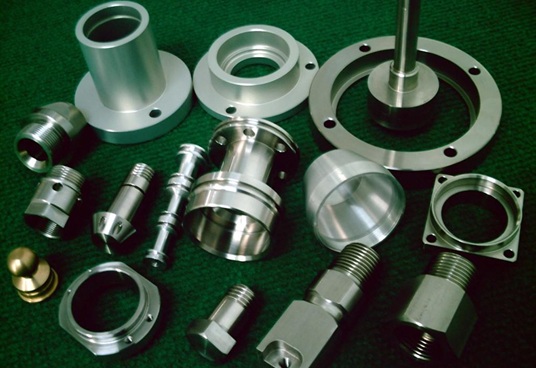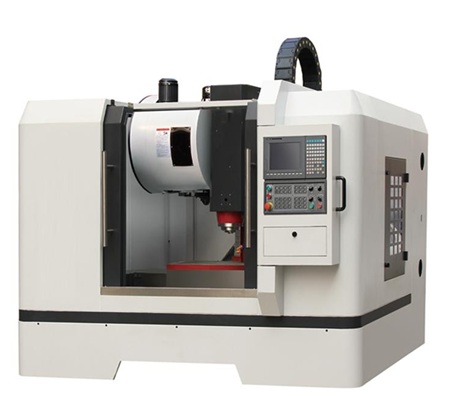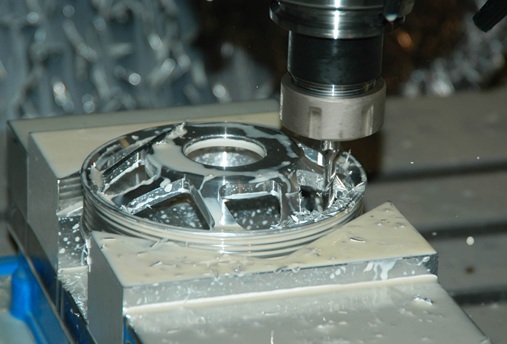9 Factors You Must Know About CNC Machining Cost
When it comes to CNC machining cost, there are a number of factors that need to be taken into consideration. Let’s begin with some factors that affect CNC machining cost.
1. Order Quantity
Quantity has a big bearing on CNC machining cost due to both the material cost and the actual production. CNC machining cost are based on the machine set up time and the time required to process the project. If you are preparing the part analysis and setting up equipment, the cost is similar for 1 piece or 10000 pieces. So the cost per item will increase greatly for small orders.This does not mean the CNC machine is not interested in doing smaller quantities. It can mean that the cost per unit may vary according to the quantity.

2. Size of the parts
Different types of machines can fit different parts and different types of parts.
Generally speaking, the smaller the part to be CNC machined, the more complex CNC machine that can be used.
If the part is very large then generally it can be done on multiple machines using less complicated processes. An example is turning and milling can be done on individual simpler machines.
3. Material
Metals suitable for CNC machining are each distinguished by different mechanical properties—like strength, ductility, corrosion-resistance, and others. These properties result in a range of machinability factors, meaning that some materials (with good machinability) are easier to mill and machine than others.
Generally, the easier the material is to be machined, the cheaper it is to work with. This is because highly machinable metals can be processed more quickly, which drives down CNC costs. However, the cost of raw materials must also be taken into account, as it can affect the overall cost of machining.
4. Machining Equipments
The machines needed to create the parts can have a significant impact on costs. CNC machining can use a multi-axis machine to make complete parts. How many different machines and operations are needed? What size of machines are needed? Modern processing and manufacturing equipment is very expensive, and the types, brands, quality, size and capacity of random machines are different. Each of these factors must be considered in the accurate cost determination of the part or product.

5. Labor Costs
One of the big benefits of using CNC machining is that it eliminates the need for lots of staff and additional labor costs. However, it’s important not to overlook the ones that you will have to cover.
The biggest labor cost you’ll come across within CNC machining is the up-front cost of design and digitalization. This uses computer software however it also requires the help of a design expert.
This can add up to a large sum, especially if you have a complicated design. However, regardless of your order size, the labor cost for your design will remain the same. This means that if you put in a large order then your labor costs break down to a much less per unit.
Additional labor costs include covering machine operators’ salaries during production. This will obviously be lower if your production window is short. The post-processing, finishing or assembly of your parts would also require some additional manual work which will increase this labor costs. That’s why it is could be cheaper for some projects to outsource the fabrication in countries like China.
In this way, you really have to weigh up your labor costs. A large order makes the design cost-per-unit lower but will take longer to manufacture. As a result, you will have to pay more in machine operation fees.
6. Other manufacturing costs
Many processed products require additional treatment, such as heat treatment, special processing operations, surface treatment, and professional coating. All these requirements will increase the cost of the base product and should be evaluated for its necessity and value.
7. Additional Completion Costs
Most CNC machining companies will offer a few different shipping options depending on your deadlines. If you need a fast turn around then you can expect to pay more for shipping. So keep this in mind when scheduling your production. Bear in mind that the material you use will have an impact on your shipping costs, as these are calculated based on weight. For example, aluminum is a much lighter metal than stainless steel so it will be cheaper to ship.

8. Number and frequency of operations
One of the most important cost drivers that is often misunderstood is throughput. Many parts need many operations and steps to complete, sometimes even many. Each of these operations must be set up and machined. From a basic manual finishing operation, you must put the required tools and consumables together to perform a very complex machining operation. Settings for personal actions can be completed in minutes to days or even weeks. If you need all the necessary settings to run a prototype sample, all the associated costs must be allocated to that sample, so it can be very expensive. If you execute the same setup to run 10000 pcs, you can allocate the same setup cost on 10000 pcs, thus greatly reducing the cost of each piece. These operating frequencies can also play a role. If a customer needs 50 deliveries per week, many customized machine tool stores can run 200 pieces at a time, or even all the quantity requirements of a year, so they can also allocate high cost setting costs. Therefore, it can be used to reduce the cost of components to provide the guarantee of machine tool repetitive work and accurate demand estimation. Many customized machine tool stores run 200 pieces at a time or even the annual quantity requirements, so the same allocation of high-cost setup costs. Therefore, it can be used to reduce the cost of components to provide the guarantee of machine tool repeated work and accurate demand estimation. Many customized machine tool manufacturers run 200 pieces at a time or even the annual quantity requirements, so they also allocate high cost setting costs. Therefore, it can be used to reduce the cost of components to provide the guarantee of machine tool repetitive work and accurate demand estimation.
9. Inspection Standard
If the probability of failure and related consequences can be ignored (considering the fishing reel parts), the level and level of inspection can be greatly reduced, thus significantly reducing the cost of component inspection. Therefore, when considering the cost of processing parts, clear criteria for the appropriate level of inspection should always be given.
After we know the factors to affect the CNC machining Cost. Then we discuss 5 tips to reduce CNC machining costs
1. Increase Quantity to Reduce Unit Cost
The good news about NRE cost, as its name suggests, is that it is non-recurring. That means if you’re making multiples of the same part, the same CAM programming and fixturing can be used over and over, or multiple parts can be cut at once from the same stock piece.
I recommend making more than one of each part, so that your unit cost is lower, but not so many that you’re making unneeded parts.
2. Reduce Your Material Cost
If you’re going to make any sort of part, you, of course, need to decide what it will be made out of. Many excellent materials can be machined, each with its own unique set of properties, applications, and costs. The price of different stock materials can vary widely but is usually based on general availability, as well as the difficulty to produce that material in a specific stock type (tube stock or especially thick sheets, for instance). Below, we’ll take a look at the most cost-effective metals to the CNC machine.
Aluminum
Available in a range of different alloys, Aluminum is one of the most cost-effective metals to the CNC machine. With a high machinability factor (varying slightly depending on the alloy) and a low raw material cost, it is no wonder that Aluminum is one of the most popular metals in the CNC machining world. With a high strength-to-weight ratio and good corrosion and temperature resistance, Aluminum is used by a range of industries, including aerospace, automotive, healthcare, consumer goods, and more.
Stainless Steel
Stainless steel—also available in a range of alloys—is a popular and versatile material for CNC machining applications.
Though not as machinable as Aluminum, Stainless Steel does maintain a good machinability-to-low-raw-material-cost ratio. Stainless Steel boasts a number of properties—including high strength, chemical resistance, and hardness—that make it ideal for applications in the automotive, aerospace, food, marine, and healthcare industries, to name a few. 303 Stainless Steel has good machinability and is ideal for producing fittings and fasteners; 304 Stainless Steel which is commonly used for cookware and chemical-processing equipment; and 316 Stainless Steel, which is suitable for more extreme applications such as those in the marine or chemical industries. Out of the three, 303 Stainless Steel is the most cost-effective option because of the presence of sulfur and phosphorus.
Brass
Brass Next on the list of cost-effective CNC Machining metals is Brass, a metal alloy made of a combination of copper and zinc. Brass has a high machinability factor (better than Stainless Steel), though its raw material cost is slightly higher. However, Brass has a high scrap return, which can reduce the cost of raw material. Brass C360 and Brass C260 have higher zinc content. Brass C360 is the most cost-effective option for machining Brass, because of its soft, easily machinable nature and the low impact it has on machining tools. In general, Brass is known for its medium hardness and high tensile strength, making it suitable for applications in the electrical goods, consumer goods, architecture, automotive, and healthcare sectors.
Copper
Copper Similar to Brass, Copper has a very high machinability rate, meaning that the metal is itself not expensive to the CNC machine. What drives the cost of Copper up, however, is the price of raw material. Nonetheless, Copper is a popular material for applications that require good electrical and thermal conductivity and is sought after in the automotive, consumer electronics, and healthcare sectors. Other material properties include good corrosion resistance. 110 Copper has excellent electrical conductivity and formability, and 101 Copper has the highest copper content of all the Cu alloys and therefore has the best conductivity.
Titanium
Titanium On the higher cost end of CNC machining metals is Titanium. Titanium is notoriously challenging to machine due to its low thermal conductivity and high strength. Moreover, the raw material has a relatively high price, which leads to high material and machining costs. Still, Titanium’s unique properties—including an excellent strength-to-weight ratio—make it a popular material for specialized industries such as aerospace and medical. Titanium is also characterized by excellent corrosion, chemical, and temperature resistance. Customers seeking to work with Titanium can choose from two machinable alloys: Grade 2 Titanium, with high corrosion resistance, and Grade 5 Titanium (Ti6Al4V), the strongest Titanium alloy.
3. Reduce Setup Time
Besides thinking about what your part will be made from, it is also important to think about how it will be made. Here’s where things start to get a little tricky, as there’s often more than one way to skin a cater, machine a part. We’ll start by looking at how design dictates the amount of setup time prior to machining.
Setup time, which consists of CAM (computer-aided manufacturing) programming, as well as machine setup and part fixturing, is commonly known as non-recurring engineering (NRE) cost. It typically makes up a large portion of a machining bill at the prototyping stage and should be minimized as much as possible.
It’s wise to assume your parts will be made on a 2.5/3 axis machine, due to their common availability. With this machine type, aside from the part profile, features can only be machined on one side at a time.
Most parts can be machined in six setups or less, as they are made from a six-sided, prismatic piece of stock material, such as a sheet, bar, or strip, that’s held in place by a vice or vacuum table (or sometimes just double-sided tape!). You should try to reduce this number as much as possible—1 or 2 is ideal—as each setup requires its own CAM program and fixturing step.
4. Avoid using special fixturing
Occasionally, your part may have features that require non-standard fixturing, another source of added cost. These types of fixtures are varied enough to warrant a separate discussion, but below are two common ones and the features to avoid if you aren’t willing to shell out the extra dough.
Soft Jaws—parts with complex or organic geometry cannot always be held reliably in a standard vice, so a set of jaws with geometry mirroring the part surface are machined for a better grip.
Sine Bar—parts with features not parallel or normal to stock surfaces, such as a hole at a 30-degree angle, will need to be set up using this device, which allows the workpiece to be held at custom angles.
5. Reduce Machining Time
The last aspect of cost savings to consider is the actual time it takes to machine your part. For the most part, this is dictated by the two things you’ve already taken into consideration: material and part design.
Impact of Material Type
If your functional requirements allow you material flexibility, choosing the most machinable one should save money. In general, harder materials take longer to machine, due to the risk of breaking tools, but there are also exceptions to this rule. A few tips to keep in mind:
Cutting plastics too fast will cause the tool to rub the material, rather than cut it, leaving an undesirable surface finish. Aluminum, though harder than plastics like ABS, is actually slightly easier to machine, although the material cost may be a tradeoff.
In the case of steels, the higher the carbon content of the alloy, the harder it is, and the more difficult it is to machine. Try to aim for a low carbon version of an alloy, if possible (e.g., 316L over regular 316). 303 Stainless Steel is the fastest to machine. Metals containing magnesium or zinc, such as brass, are highly machinable.
Impact of Part Design
Again, your functional requirements will likely drive part design, but here’s a list of considerations to keep in mind:Tolerances—Tighter tolerances = higher cost.
Hole size & depth—Deep, small holes are slow to machine accurately and prone to tool breakage. Avoid if possible.
Internal radii—The smaller the radius, the smaller the end mill required to create it. The smaller the endmill, the slower it must machine. Go as big as is practical.
Depth of cut—Like holes, extra deep pockets take a long time to machine and may require special-order tools. Try to go no deeper than 10X your smallest internal radius (5X tool diameter).
Wall thickness—Thin walls require extra care. Our recommended absolute minimum is 1.0mm for plastics and 0.5mm for metals.
Undercuts—Certain features, such as O-ring grooves or keyways, can (and often must be) machined with a tool made especially for undercuts. Other than this, it’s not usually a good idea to design a part with overhanging material.
Summary
This article introduce the 9 Factors affect CNC Machining Cost. Order quantity, Size of Parts, Material,Manufacturing equipment,Labor Costs.etc. And how to reduce CNC machining cost suggestion.


